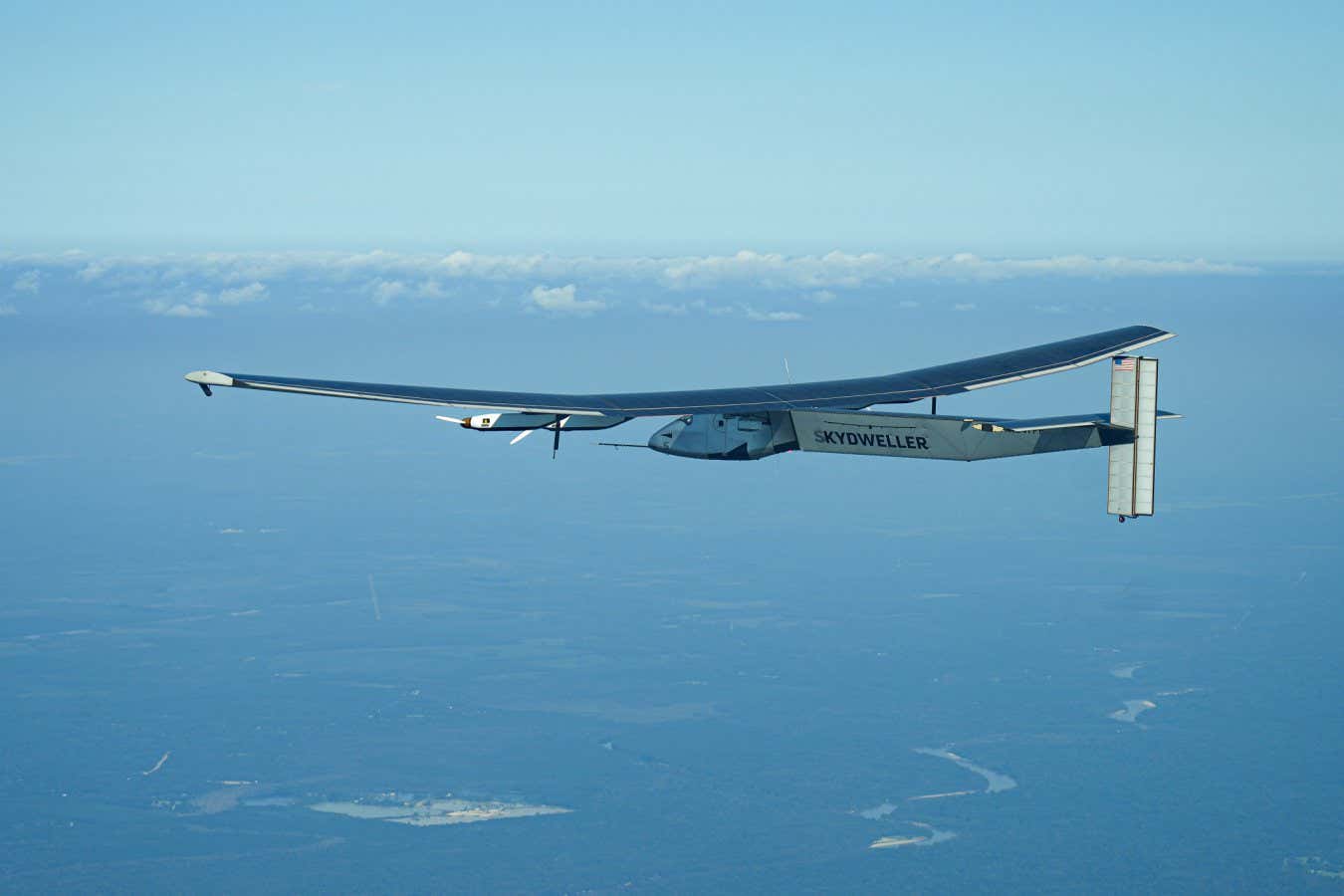Now Reading: Solar Drone with Jumbo Jet Wingspan Promises Months-Long Flight
-
01
Solar Drone with Jumbo Jet Wingspan Promises Months-Long Flight
Solar Drone with Jumbo Jet Wingspan Promises Months-Long Flight

Rapid Summary
- The Skydweller drone is a solar-powered,uncrewed aircraft with a 72-meter wingspan,larger than a boeing 747.
- Operated by US-Spanish company Skydweller Aero, the drone weighs approximately 2,500 kilograms. It is indeed designed for extended flight durations and maritime surveillance.
- The design originates from the Solar Impulse 2 aircraft that completed the first solar-powered flight around the world in 2016; it was repurposed into an autonomous system with potential for “perpetual flight.”
- Recent tests demonstrated it’s capabilities: its longest test flight lasted over three days (20-23 July), launching from Mississippi’s stennis International Airport. Earlier this month, it also achieved another long-duration flight of over 18 hours on 14 July.
- With advanced carbon-fiber construction, altitude capability of over 13 km during daytime and an notable payload capacity of up to 400 kg (exceeding most comparable solar-powered drones), it highlights enhanced operational utility.
- French aerospace firm Thales supplied airborne radar technology to augment surveillance capabilities aboard the drone.
- Despite decades-long military interest and use in testing-including significant US military funding-no global military has yet brought such drones into sustained usage or deployment programs.
- historical efforts by tech companies like Google and Facebook toward commercializing solar drones have not succeeded due to unclear sustainable business models.
!campaign=RSS%7CNSNS&utmsource=NSNS&utmmedium=RSS&utm_content=home”>Read More
Indian Opinion Analysis
The advancements associated with Skydweller Aero’s persistent-flight solar drone could hold meaningful relevance for India’s growing defense modernization efforts and renewable technology initiatives. India’s strategic requirements align with technologies capable of extended aerial surveillance over important areas such as maritime borders or vast terrains like Ladakh or Arunachal Pradesh regions where traditional systems face limitations. Though, historical skepticism regarding commercial sustainability-as illustrated by challenges faced globally-suggests caution before large-scale adaptation.
india’s ongoing investments in UAV (unmanned aerial vehicle) infrastructure could benefit from observing how prosperous autonomous renewable systems like this are operationally validated through consistent real-world application elsewhere first. Given that energy self-reliance remains pivotal across sectors-from defense to disaster relief-the convergence of innovations seen here could inspire indigenous development aligned with India-specific needs rather than outright reliance solely on external projects at initial stages.

























